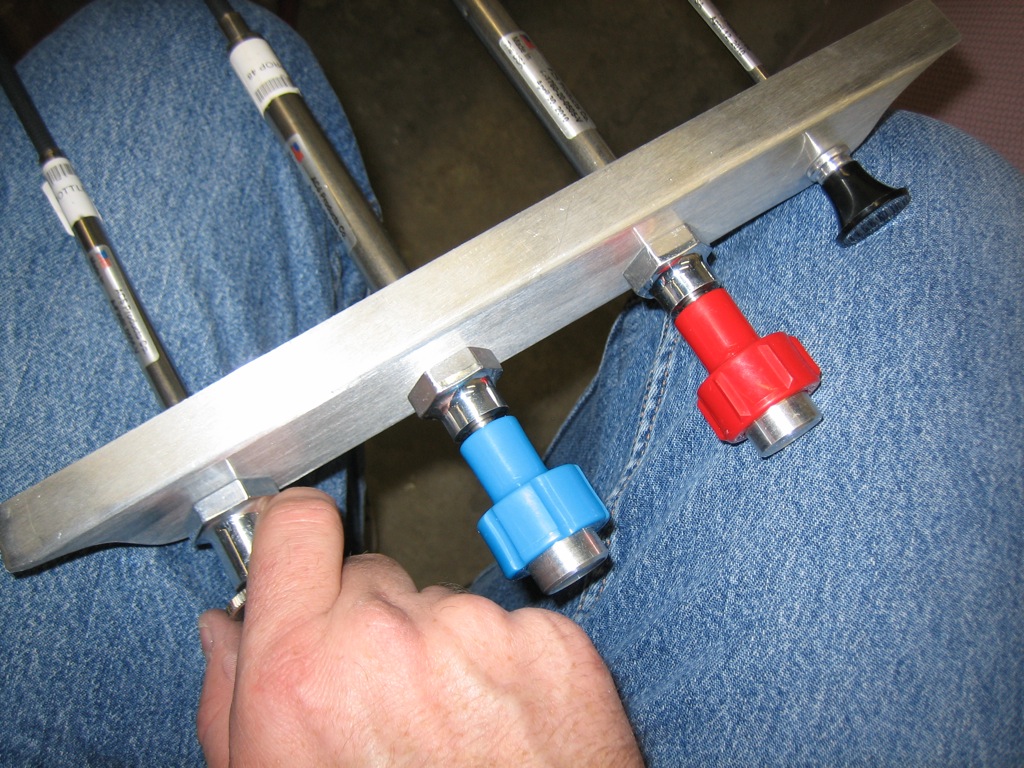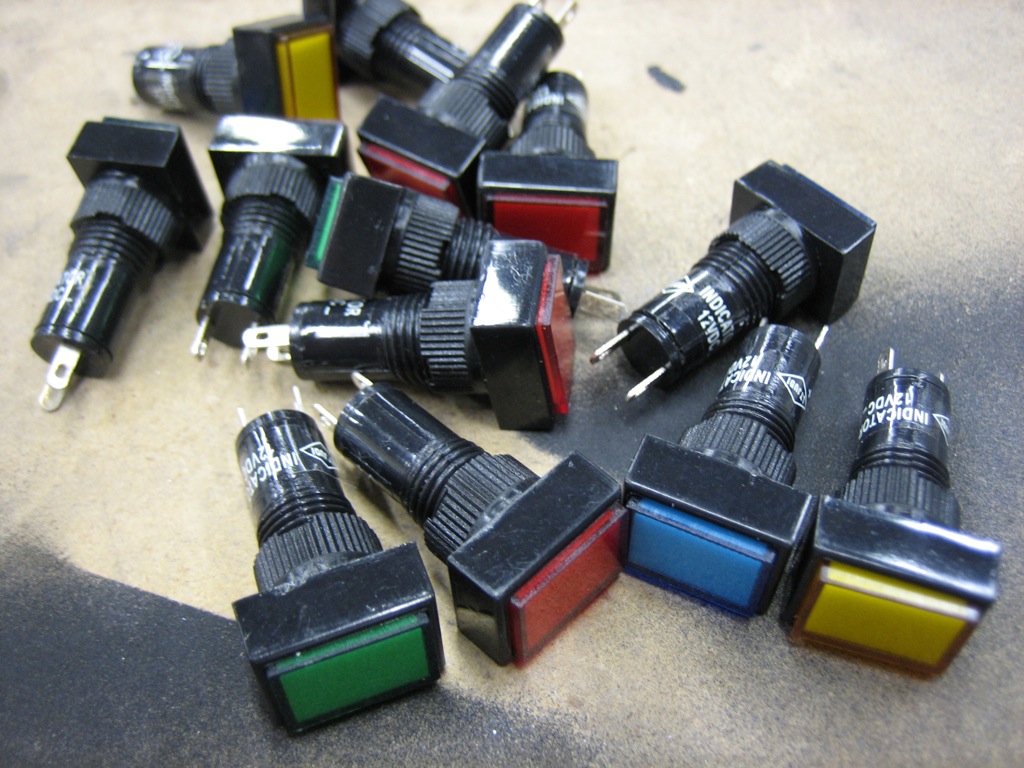No pictures tonight, but I worked on getting the canopy to close more smoothly. I then spent a little more time working on the panel layout and put in an order for some electrical goodies from B&C.
Fit Flap Position Sensor
I stopped by the hobby shop tonight and picked up some small 4-40 threaded rod and some threaded clevis ends to connect the flap arm to the Ray Allen position sensor that will feed the flap position to the VP-X. I stole the dimensions from Mike Bullock’s site and they worked perfectly.
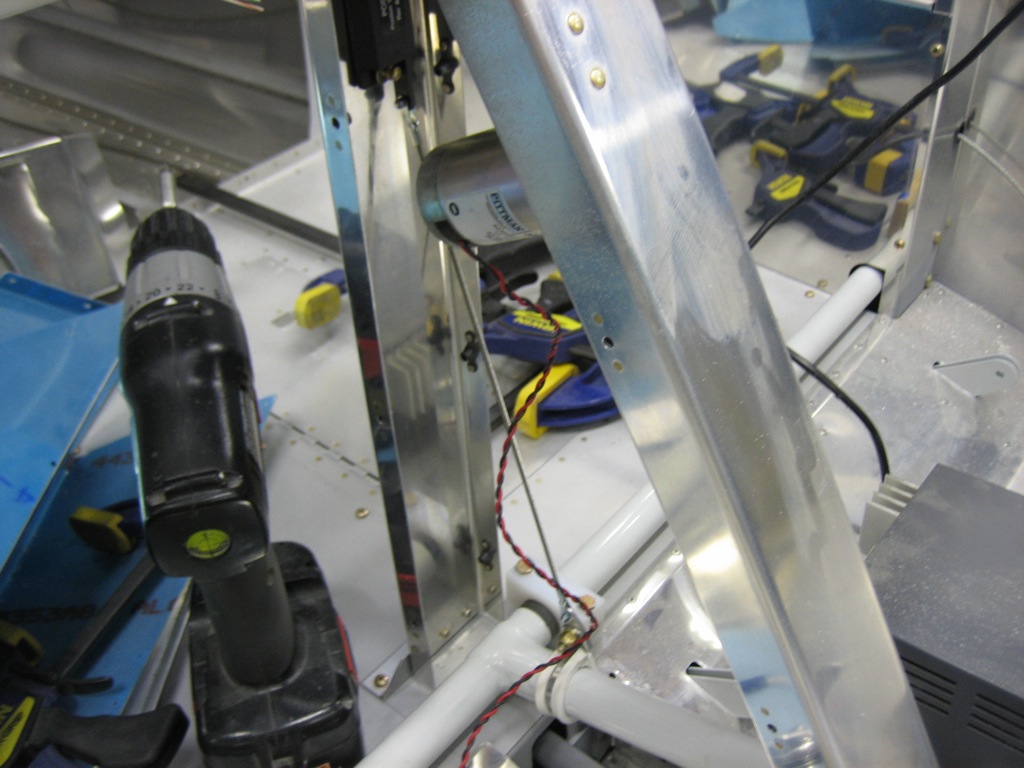
I fabricated a small clip that bolts to the adel clamp to connect the clevis to the flap rod. I used a piece of 0.063″ angle with one leg mostly cut off. This wraps around the side of the adel clamp flange and will prevent it from rotating.

Here’s the other end. I didn’t tighten the nut fully since it interferes with the nut on the clevis.

I turned the screw around on the clevis and tightened it more fully. I ended up also having to use one of these tiny lock nuts to provide clearance from the clevis screw.
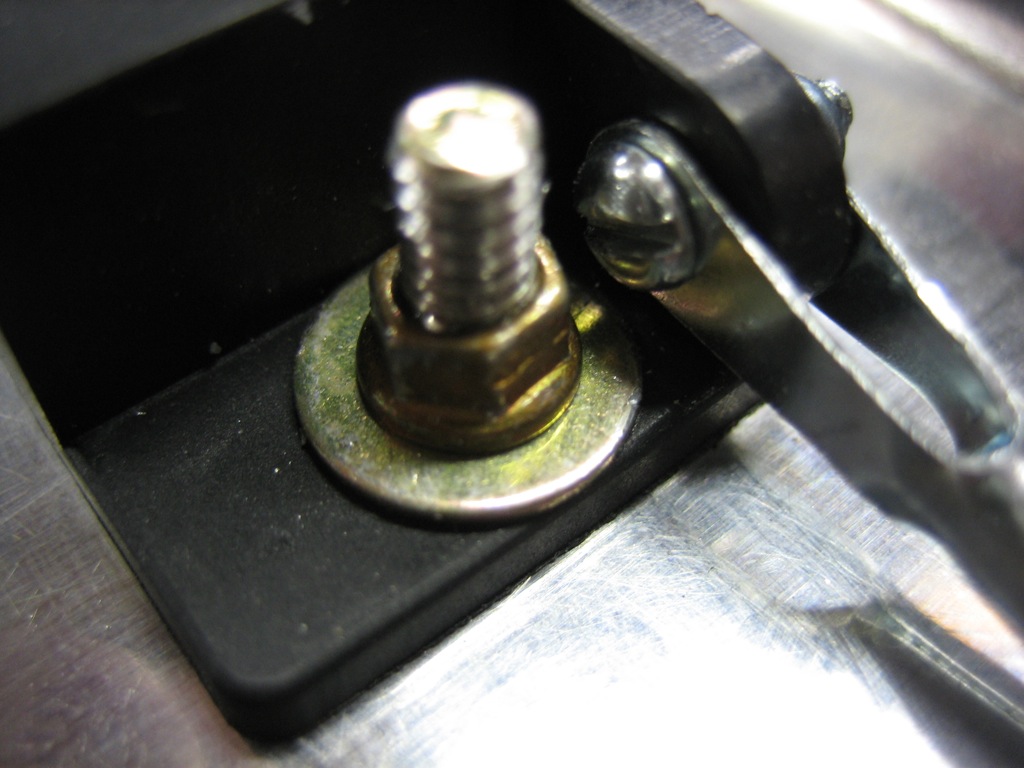
Riveted Canopy Bow and Installed Canopy
I primed and riveted the canopy bow together. One of the rivets intersects a tooling hole, but I’ll fill both of these with filler anyway.

I clecoed on the canopy bow and then drilled the latch lugs to the canopy frame. There is very little room to fit these, so Van’s basically has you just guess where to drill the holes and then cheat them over if you guess wrong. I didn’t like that approach, so I slipped the lugs in from the bottom and then engaged the latch to define the lug position. I then ran the drill bit through one of the holes in the weldment to mark the lug. I then removed it and center punched along the scratch and drilled to #40. I reinstalled the lug, held it vertical and drilled the second hole. This worked perfectly and the lugs seem to be in just the right spot. Finally, I reinstalled the struts and raised the full canopy frame for the first time. Without the canopy, the struts nearly eject the canopy frame from the airframe.

I temporarily installed the canopy to see how it affected opening. With the extra weight of the canopy, it opens nice and smooth. You really have to manage it coming down though since it hits the neutral point about 12-18″ up and will slam down if you’re not careful. I’m also going to have to add some guides that help align the lugs with the holes in the side rails. Without that, it’s too easy to have the canopy come down slightly cocked and have the lugs hit the top of the side rails.
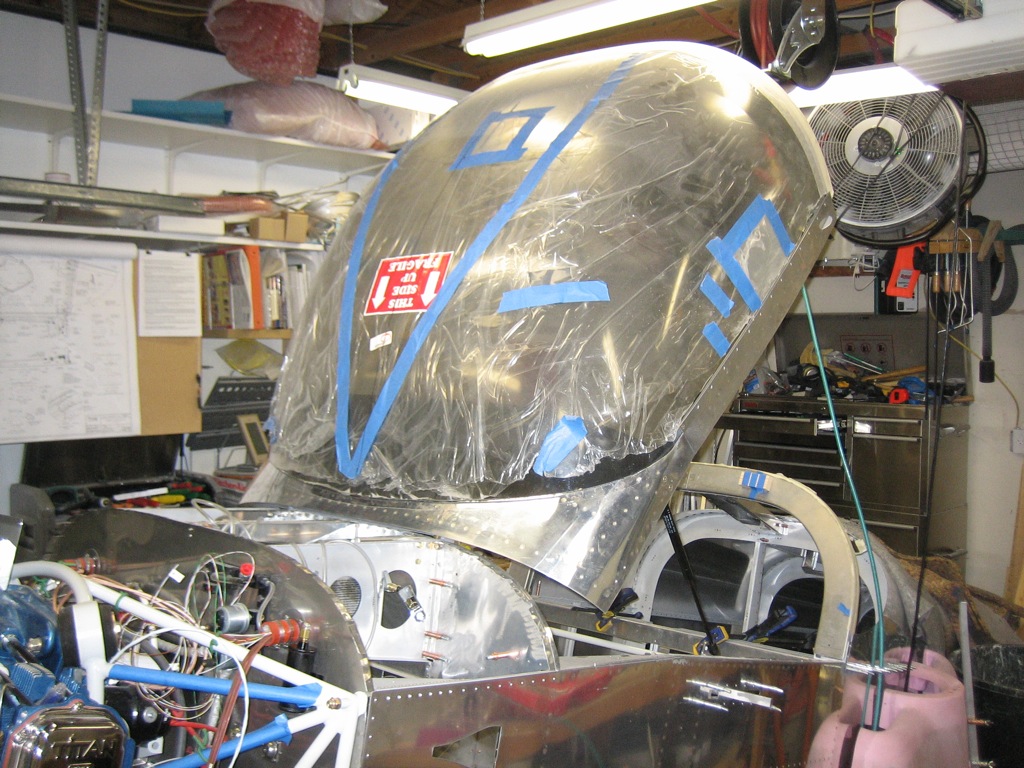
Finally, I spent about an hour inside the cockpit. I put down enough padding to simulate the thickness of the seats to see how much head and knee room I was going to have. I also tried the control bracket to see how it affects my knee room. I ended up biasing it to the right so that the prop control is centered on the panel. This will give the passenger less knee room, but they’re not flying so it shouldn’t be that big of a deal. I also spent a bunch of time thinking about the placement of switches, buttons, etc. on the panel. The radio stack will be centered with the SkyView displays as close to the stack as I can mount them. This should leave room on the left for a TruTrak Gemini and some switches. There will also be some switches below the SkyView displays and a few other odds and ends on the right side of the panel. I’ll lay this out more precisely eventually.

Installed New Brake Lines and Bled Brakes
The last time I spoke with Brett at Bonaco, he indicated that they now have black anodized fittings, so I ordered replacement AN822-3D fittings and new hoses from the reservoir to the master cylinder with black fittings on each end. This looks so much nicer now that everything associated with the brakes and rudder pedals is black anodized aluminum.
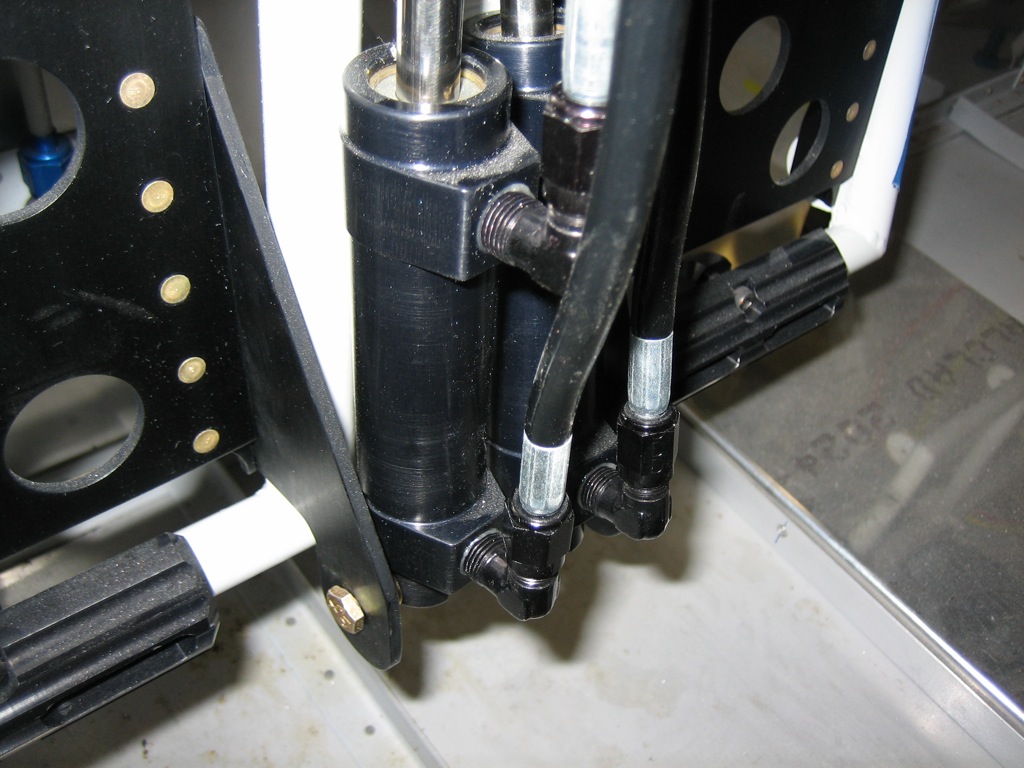
I torqued down all of the fittings and decided to fill the brake system tonight. I’m using Royco 782 fluid. I was able to find quart sizes of this at SkyGeek.com.
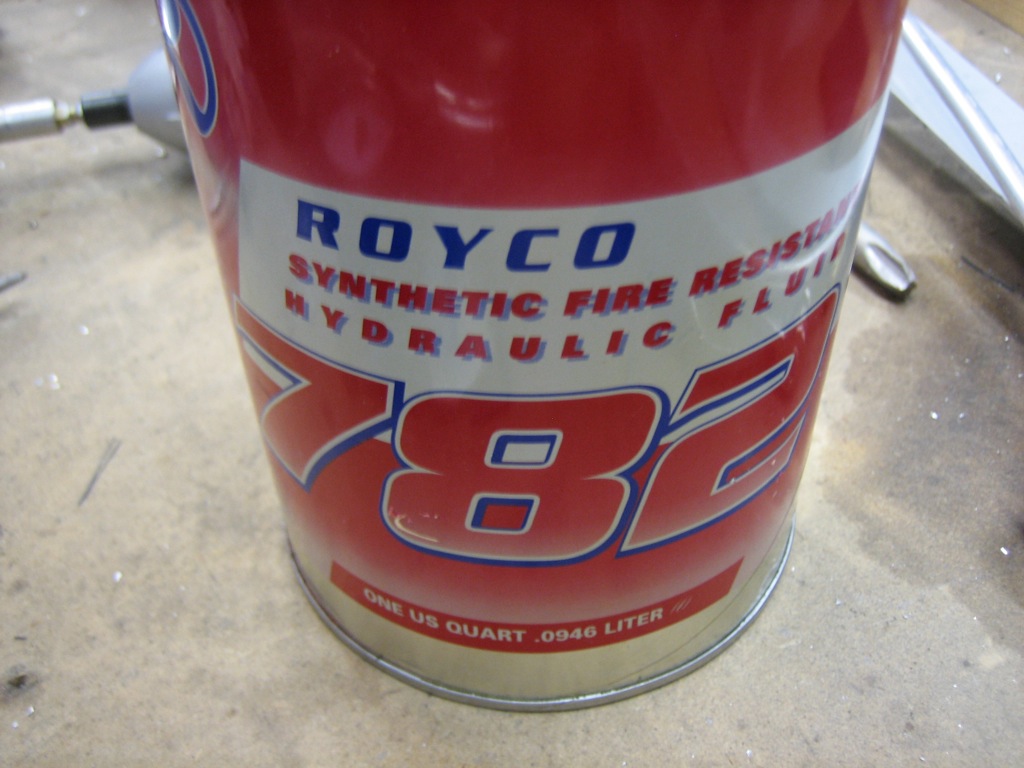
Royco 782 is a MIL-PRF-83282 fluid which is the replacement for MIL-H-5606 and has a much higher flash point. There have been brake fires with MIL-H-5606, so I didn’t want to use that.

The general consensus seems to be to use a pressure system to fill the brake system from the bottom, but people sometimes still have issues with bubbles in the system. Getting the bubbles out of the system has nothing to do with the direction you fill the system, it’s all about getting a high flow rate through the system. If the flow rate is too slow, bubbles will get stuck in high spots in the system since they tend to migrate fairly slowly through the narrow lines. With a high enough flow rate, the bubbles can’t help but be carried along with the fluid.
Instead, what I did was create a closed system to pump the brake fluid through. I hooked up a fitting and hose to the brake fluid reservoir and put the other end in the can of brake fluid. I then hooked up another hose to the fitting on the bottom of the wheel caliper and also put that hose in the can of brake fluid. Now, as fluid is pumped out of the can and through the system, it’s returned back to the can. All I had to do after that was operate the brake pedals fully and moderately quickly until nothing but clean fluid was being pumped back into the can. This only took about 30 seconds on each side. The brakes are absolutely rock solid and no leaks!

Received Annunciator Lights
Painted Canopy Glareshield
In preparation for installing the canopy bubble to the canopy frame permanently, I needed to pain the glareshield a flat black so that there won’t be any glare on the inside of the canopy. I scuffed the surface with scotchbrite and cleaned it thoroughly since this will be nearly impossible to repaint later. I then primed it and painted it.


Finally, I pulled the canopy bow off the plane and drilled the splice plate.
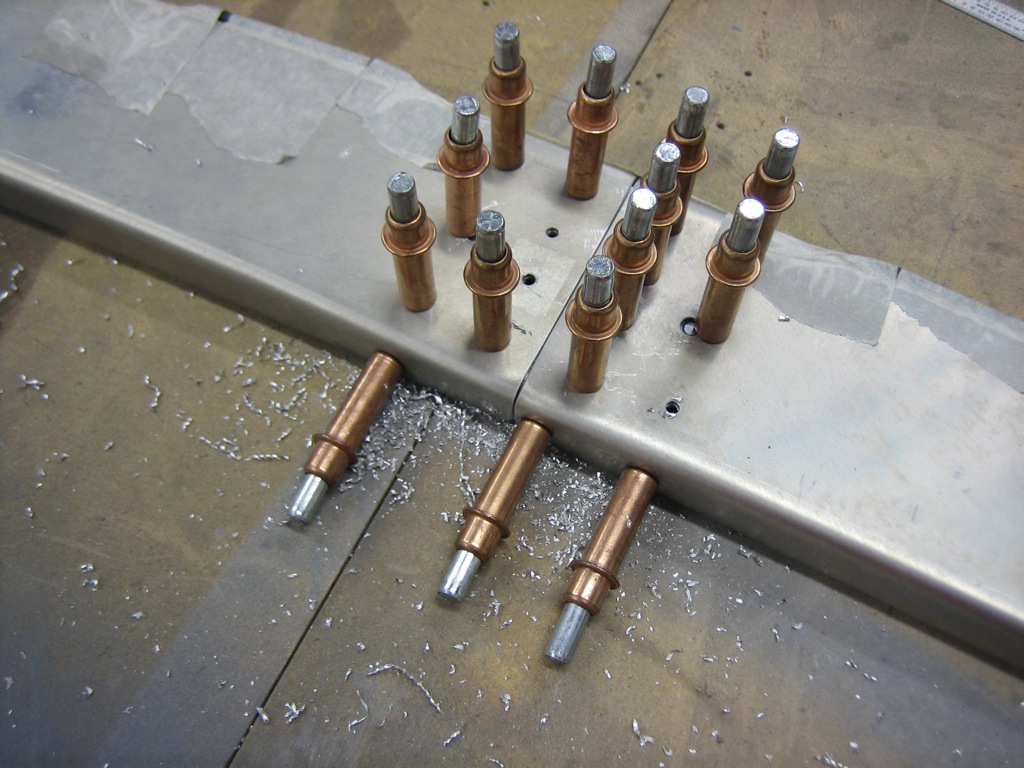
Installed Alternator Cable and Worked on Canopy Side Skirts
I installed the alternator wire today. This is 6AWG wire which is slightly larger than what is needed for a 40A alternator (8AWG would be fine), but there’s a possibility I may swap this out for a 60A alternator at some point, so I went ahead and ran 6AWG. Here’s the connection at the alternator end. A terminal has been crimped on, then heat shrink over that to act as a strain relief, then a boot over that to keep the hot lead protected.
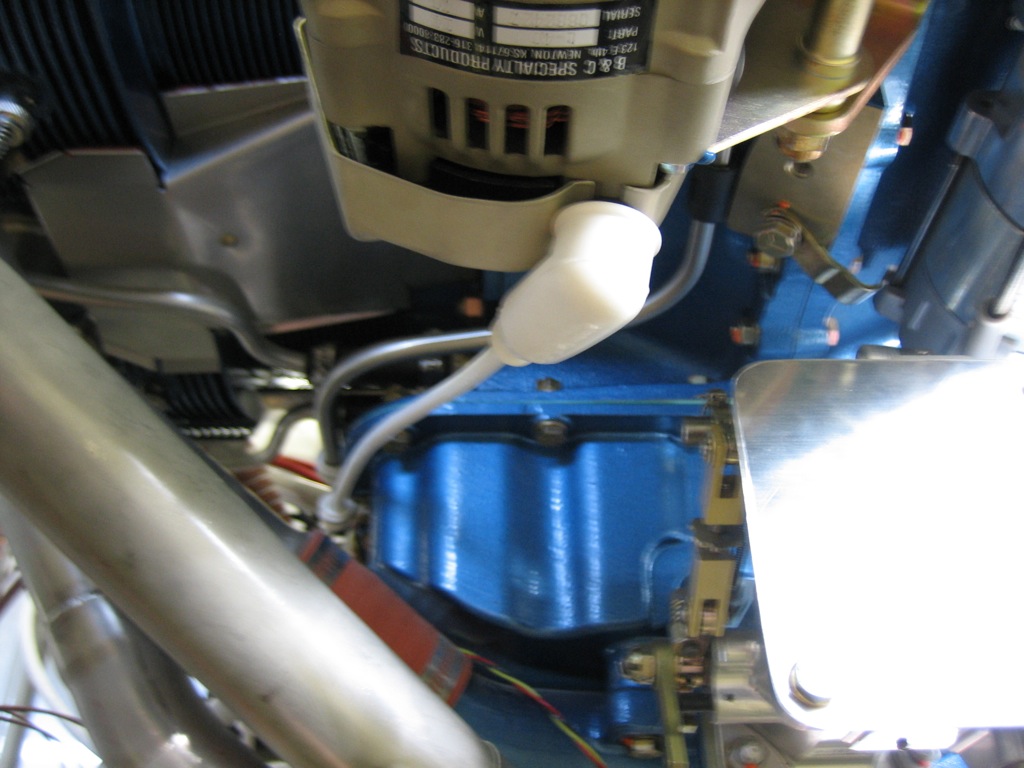
I anchored the wire to one of the sump bolts where there was already a longer bolt for the prop line.
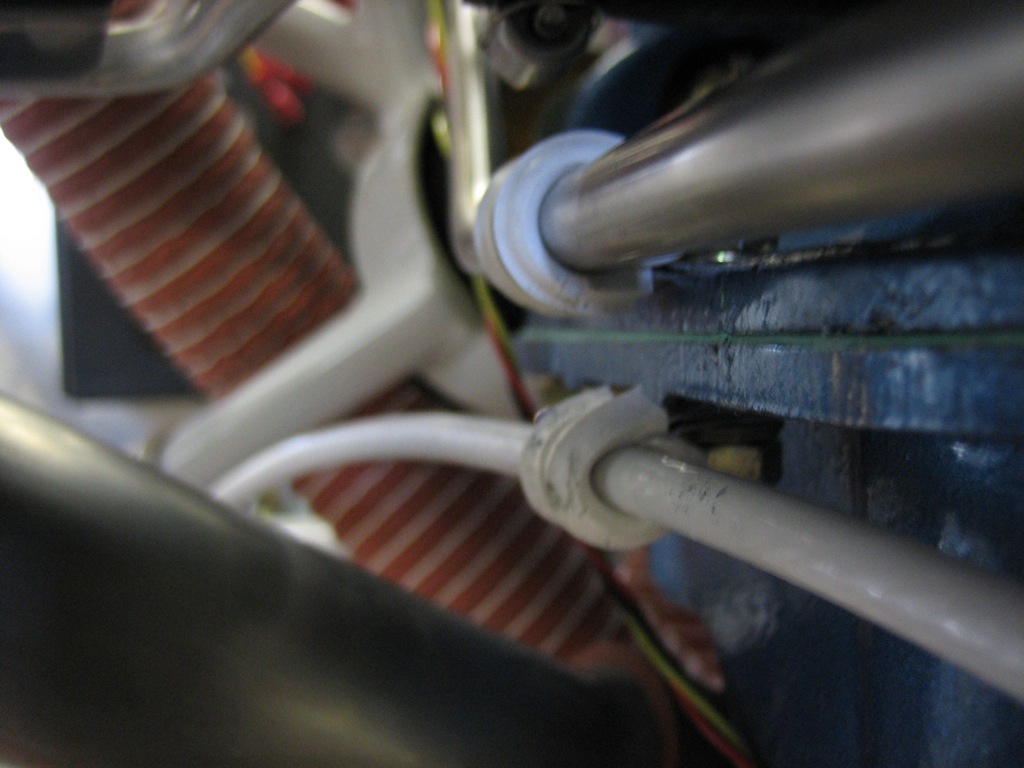
Here you can see that the line is anchored in two more places before connecting to the shunt.

After finishing up the alternator cable, I resumed work on the canopy side skirts. I pulled the canopy and frame off of the plane and drilled the #27 holes for the #6 screws, then deburred, dimpled, and countersunk all the necessary holes.

The plans have you fabricate a boring, angular canopy lift handle and then rivet it to the outside of the canopy frame. I thought it looked cheesy, so I’m deviating a bit here. First up is to round the handle nicely instead of just chopping the corners off.
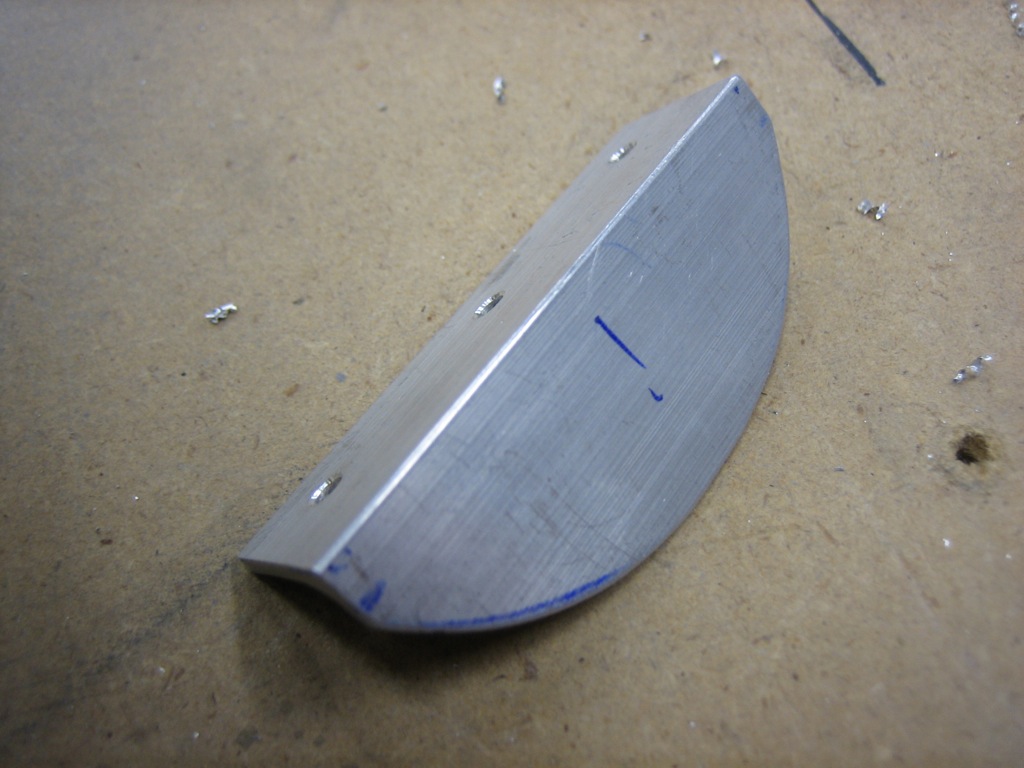
I then cut a slot in the canopy skirt and frame. This will allow me to mount the handle on the inside and only have the horizontal piece be seen from the outside. I made the initial slot with the cutoff wheel in the die grinder and then used needle files to get it perfect.

I then clamped the handle to the inside of the canopy frame only.
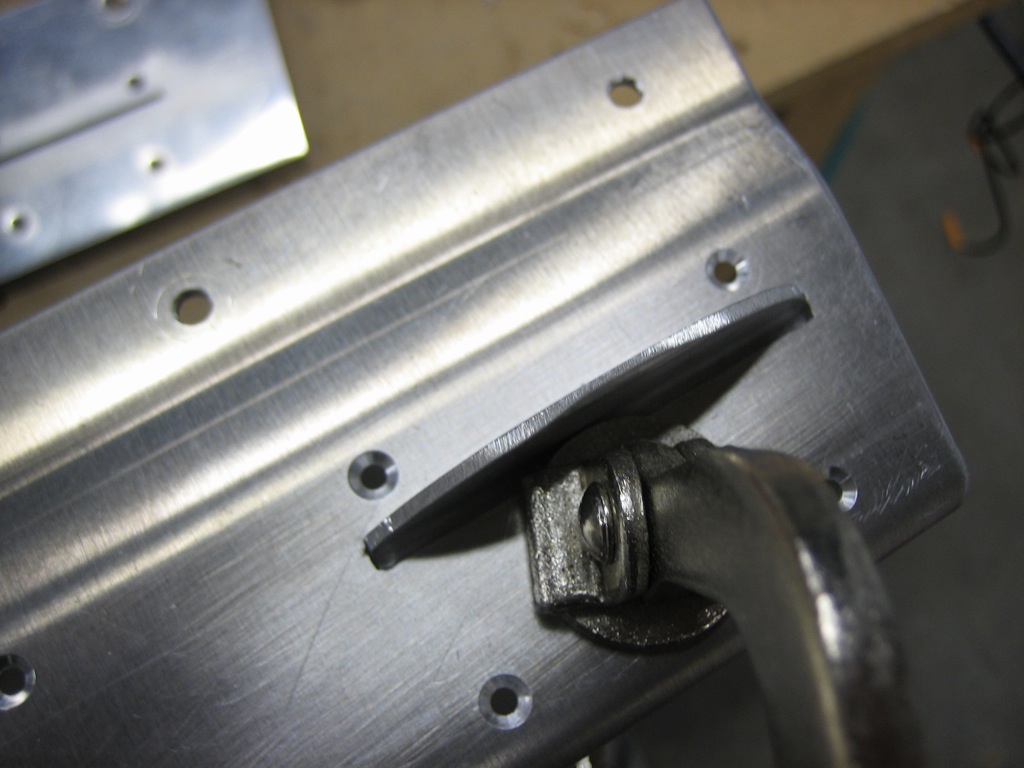
And drilled the frame to the handle.

After deburring, countersinking, and priming the mating surfaces, I riveted the handle to the frame only.
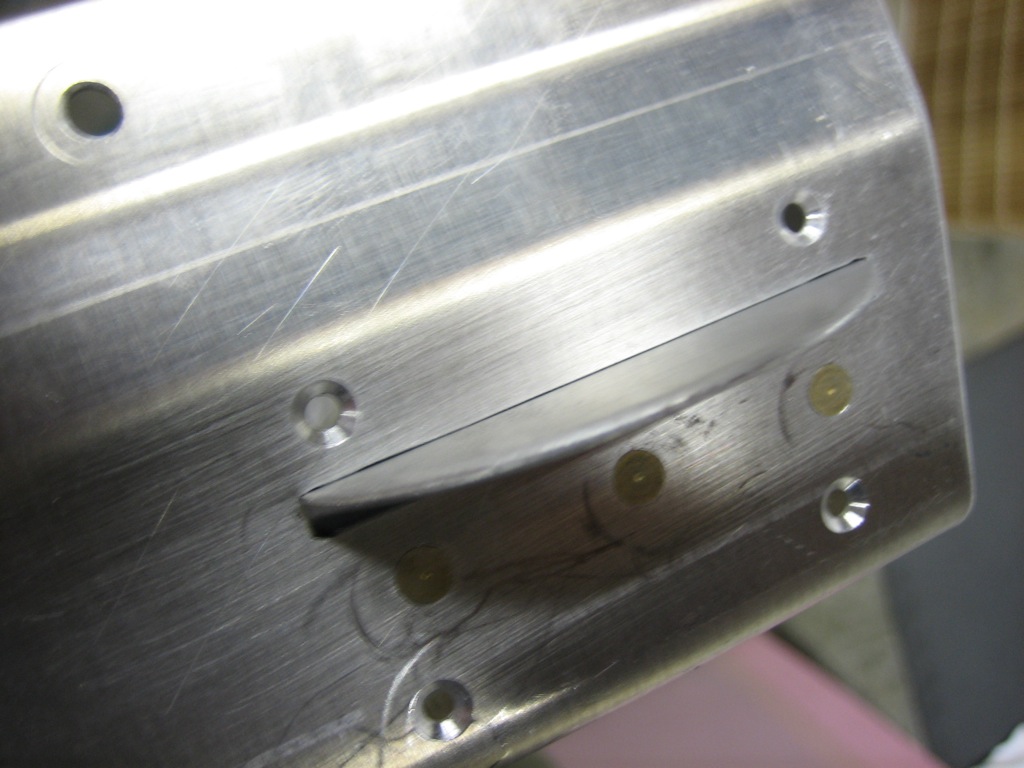
Finally, I installed the skirt and riveted it to the frame. This looks so much nicer than the handle specified in the plans and only took about an hour to do. While I was working on the side skirts, I rewatched (mostly just listened to) Evil Dead III: Army of Darkness for about the 20th time. That is such a fucking awesome movie; Bruce Campbell rocks.

Soldered Ignition Wire and Install Heat Muff Scat Tube
I got an order from Aircraft Spruce today with some shielded 22AWG wire. I soldered the inner wire to pin 6 of the lightspeed input connector and the shield to pin 13. I then slipped inner and outer pieces of heat shrink over the wires and shrunk everything in place.

Also in the order was some 2″ scat tube and some 2″ hose clamps. Here is the hose from the output of the heat muff up to the heat box on the firewall.

Here is the hose from the back of the baffles down to the heat muff. I’m not sure if I need to secure this at an intermediate point or not; I need to do a little research on that.

Drilled Canopy Side Skirts to Canopy Frame
I only had a little time in the garage tonight, so I decided to drill the canopy side skirts, mostly to get them off my bench.
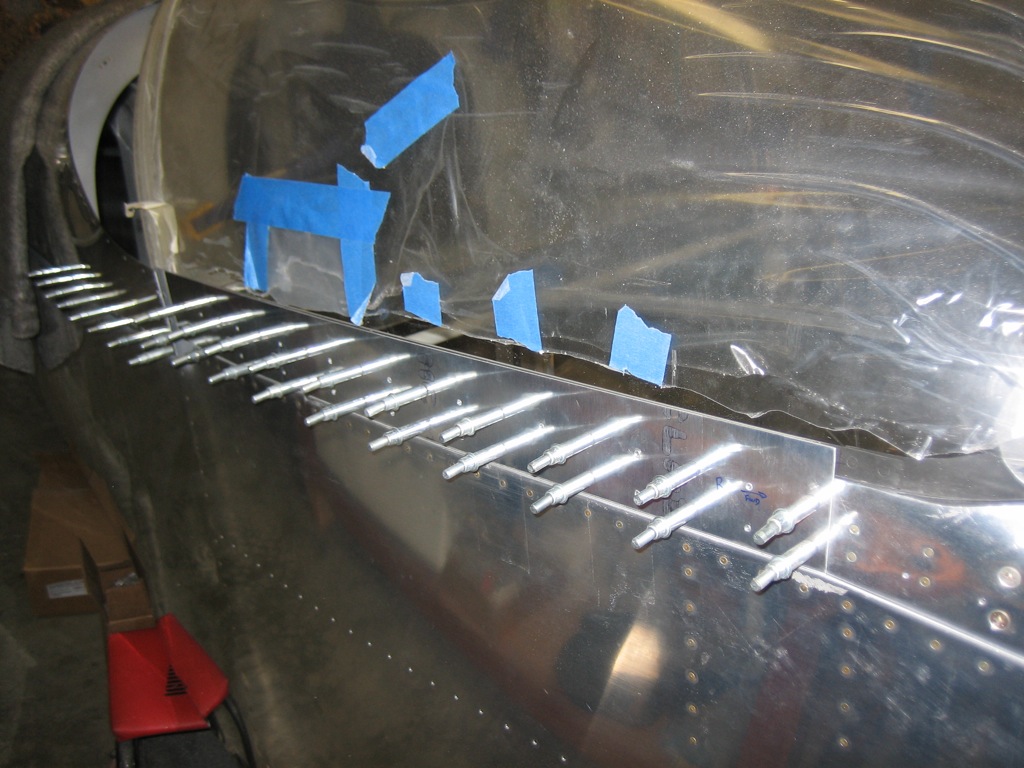
Here you can see that the front joint is aligned with the downward bend in the longerons. Since the canopy rails aren’t yet riveted down, there is a gap here that I’m hoping will go away once everything is riveted together.

Here you can see that I left the side skirts a little long so that they can be trimmed to perfectly align with the skin that surrounds the rear window.

Drilled Control Cable Bracket
I got an email from Joe Blank at Van’s today. After reviewing my cowl fitting issue further, they now think my cowl is made correctly and that if I trim the aft edge all the way around, I should have enough overlap on the sides to make a straight joint.
Anyway, tonight’s little project was to determine the mounting position for the control cables. I used the stock bracket that came with the kit to mock up a potential control spacing to see if there were any conflicts before drilling the actual bracket that I bought from Experimental Air. My original goal (and what I mocked up here) was to put the three engine controls in the center, the parking brake on the left and the cabin heat on the right. This resulted in 2″ between the outer knobs and the outboard engine controls and about 2 7/16″ between each of the engine controls. After playing with it for a few minutes, I decided that this was too tight and that the cabin heat knob should be removed from the bracket.

As you can see, I also moved the parking brake knob over to the right side of the bracket so that it’s out of the way. This also has the advantage of bringing the engine controls closer to me. The three engine controls are spaced 3″ apart and the parking brake knob is a hair over 2 1/2″ from the mixture knob. You can also see that I drilled the holes lower than the center of the bracket. They’re 3/4″ up from the bottom edge which leaves plenty of room to provide labels for each of the controls.

A top view shows that my hand has plenty of room when operating each knob.
